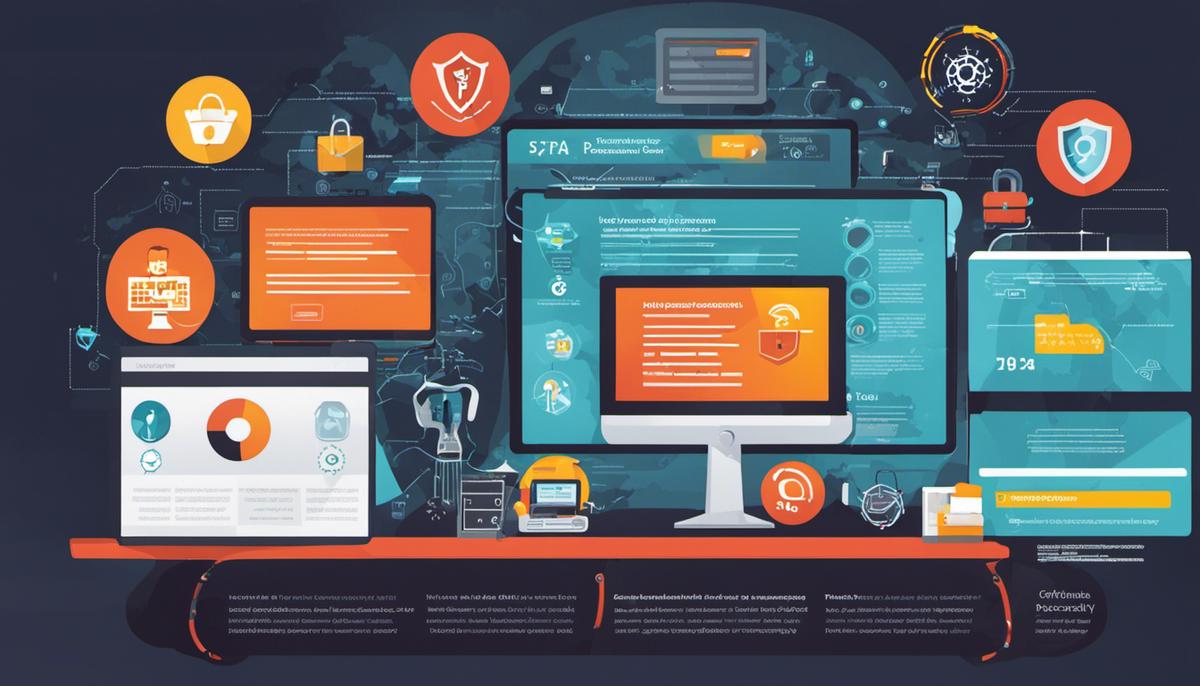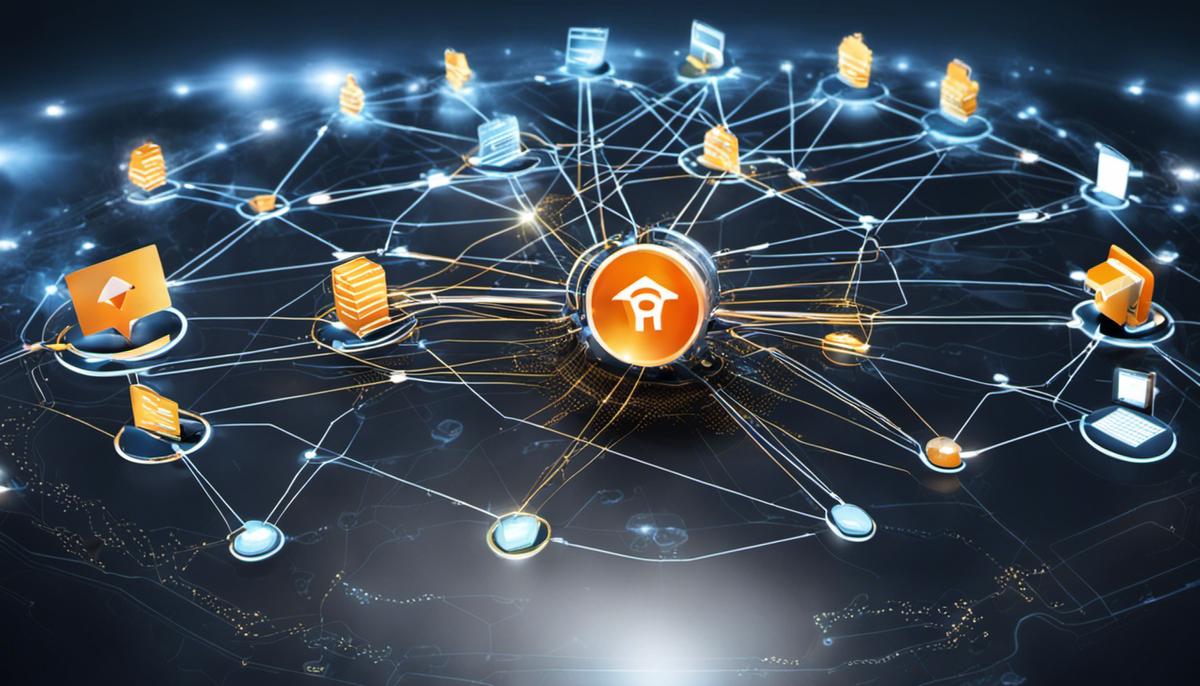In the increasingly interlinked digital landscape of today’s world, PII cybersecurity has taken center stage in safeguarding sensitive personal data. Central to this sweeping change is the concept of Personally Identifiable Information (PII), which encompasses an extensive range of personal details, from Social Security numbers to our unique biometric fingerprints. More than just a priceless resource, PII is the heart and soul of our digital identities, offering our world a ticket to the virtual space yet presenting a susceptible target to cyber threats. This essay navigates the immense field of PII cybersecurity, shedding light on its immense importance, the potent threats it faces, the global legislative backbone that supports it, and the innovative best practices that preserve it. It also gazes into the future, predicting trends and exploring advanced technologies poised to fortify PII’s protective ramparts.
Understanding PII
The Ins and Outs of Personally Identifiable Information
Unmasking the concept of Personally Identifiable Information (PII), a term thrown around frequently in the tech world, is today’s agenda. At its core, PII is any information that can identify an individual either directly or when combined with other details. The scope of PII is extended far beyond what most might initially consider, and understanding its breadth is incredibly vital, particularly in the realm of data protection and privacy.
Firstly, let’s dive into the obvious – PII includes explicit identifiers such as full names, social security numbers, street addresses, email addresses, and phone numbers. These pieces of information, brandished alone, can pin down an individual with terrifying precision. Nonetheless, this is just the tip of the tech iceberg; PII delves much deeper.
Countless other attributes can be categorized as PII when combined with additional data. Pieces of information such as gender, race, date of birth, or geographical indicators don’t typically identify an individual outright but can narrow down the pool significantly. One might not think twice about these types of details when considering privacy, but in conjunction, they can create a clear identity profile.
Furthermore, the digital realm has expanded the parameters of PII in our technology-centric society. Biometric identifiers like fingerprints, facial recognition data, IP addresses, login IDs, and digital images are also parameters that fall within the PII spectrum. Scarily enough, even seemingly innocuous details like food preferences or shopping habits can piece together a persona when swirled into this cyber cocktail.
The legal implications surrounding PII are expansive. Various acts such as the GDPR, CCPA, and HIPAA exist to protect this avenue of information and ensure meaningful consent from users when their data is collected. These regulations emphasize the requirement for businesses to safeguard all collected PII diligently and only to retain the data for a legitimate purpose. Should a data breach occur, the associated company is accountable and required to inform the affected individuals without undue delay.
It’s essential to remember that the impact of PII extends beyond a single person. It has the potential to reverberate through families and communities, reaching seemingly uninvolved individuals in its web of interconnected data points.
The complexity of PII undeniably adds another layer to technological advancements, requiring an ever-increasingly methodical and tuned-in approach, particularly for tech enthusiasts and experts. While it’s easy to overlook the innocuous data slices we leave behind daily, they add up to a comprehensive, identifiable digital footprint. In a nutshell, any information, regardless of how trivial it may seem, can become PII in the digital universe. Staying conscious of your PII should be a non-negotiable in the burgeoning era of information technology.
Importance of PII Cybersecurity
In the era of digital touchpoints and machine learning-based marketing strategies, PII is not just integral but a keystone of business operations. Its role has become significantly prominent for companies looking to gain a comprehensive understanding of their consumer base, tailor their offerings, and boost their market position.
Surging to a new level of market prominence, the path of PII is, however, laden with multiple potential threats. With the intensity of cyber attacks and data breaches escalating at lightning speed, PII cybersecurity has emerged as a pressing concern in today’s digital world. Hence, it is imperative to shed light on several factors that contribute to the indispensability of PII cybersecurity.
Innovation-driven technology and information-driven strategies have painted a prime target for corporations. Often, this includes malicious attacks aimed at breaching defenses and pilfering sensitive data. The loss of PII not only tarnishes brand reputations and erodes customer trust but also mandates hefty penalties under stringent data protection regulations. A telling example is the maximum fine of €20 million or 4% of global turnover– whichever is higher, dictated by GDPR for serious infringements.
Furthermore, the growth and sophistication of underground economies that thrive on stolen PII is another reason that amplifies the necessity for PII cybersecurity. Darknet markets dealing in hacked customer data underline the menacing potential of poorly guarded PII.
Apart from these business-centric concerns, the intrusion into an individual’s private life that takes shape in the form of Identity Theft is another potential risk flagged by PII. Accentuating this, the recent US Federal Trade Commission (FTC) data states that such transgressions magnified by around 2000% between 2018 and 2020. PII cybersecurity, therefore, is a pivotal shield to defend personal playgrounds from these digital leviathans.
In view of the evolving cyber threat landscape, businesses have no other option but to adhere to PII security best practices adamantly. Incorporating robust cybersecurity programs, regular vulnerability assessments, data encryption, and consistent employee training are among the top strategies.
As the digital realm continues its progression, it is critical that PII cybersecurity remains front and center, paving the way toward a more secure cyber sphere. With every digital interaction leaving our data fingerprints behind, the onus for making PII cybersecurity a top priority rests not only with businesses but also with individuals who must take control of managing their digital personas. An axiom we must all adopt is clear: our PII is invaluable, and so should be its protection.

PII Cybersecurity Threats
After understanding the fundamentals and importance of PII, it becomes crucial to delve into the prevalent cybersecurity threats targeting it. The following sections highlight these threats while keeping it concise and not meandering from the main point.
Phishing Scams:
The most familiar and widely present cybersecurity threat is phishing. It involves trickery through deceiving emails or text messages, tricking the individual into believing they are interacting with a trusted entity. The main aim here is the acquisition of sensitive data like credit card details or login credentials, transforming into a PII mishandling catastrophe.
Malware Attacks:
Malware or malicious software is designed for unlawful access to obtain PII illegitimately. These attacks can be conveyed through a trusted-looking application, an email attachment, or a compromised webpage. Once launched, the malware can lurk within systems undetected, gathering PII without the user’s cognizance.
Man-in-the-Middle (MitM) Attacks:
In this threat scenario, a cybercriminal impedes and intercepts communication between two parties, sinuously listening or altering the communication for ill-intended gains. Confidential data and PII shared in these interactions fall into the din of cyber miscreants.
Ransomware Attacks:
It is not strictly designed for PII theft but is equally destructive; it involves locking an individual or company’s data and demanding a ransom. While encrypting large volumes of data, it commonly traps PII, presenting grave privacy concerns and potential misuse.
Insider Threats:
Doesn’t always mean an enemy on the inside. Often, it comprises unsuspecting employees whom fraudsters can leverage as a part of social engineering tactics to gain access to databases with loads of PII.
AI-powered Attacks:
As technology evolves, so does the complexity of cybersecurity threats, incorporating uses of Artificial Intelligence (AI). Cybercriminals often use machine learning and AI for augmented phishing or deepfake attacks, tricking individuals into disclosing PII like never before.
Credential Stuffing:
It pursues an outright attack on the user’s laziness, counting on the belief that people often reuse passwords across multiple platforms. Fraudsters, armed with data from previous breaches, mechanize the login attempts—ultimately a powerful guess, leading to devastating exploitation of PII.
Remember, PII protection necessitates robust security systems and relentless consciousness about secure digital behavior. Automation and technology may provide aid, but vigilance and astute digital habits remain the ultimate safeguards against PII breaches. After all, when it comes to the realm of cybersecurity, offense is indeed the best defense.

Legislation and PII
As we descend further into the ocean of the digital age, the impact of legal regulations on Personally Identifiable Information (PII) maintains an ever-developing position in our society. Protocols have been established, such as the General Data Protection Regulation (GDPR), the California Consumer Privacy Act (CCPA), and the Health Insurance Portability and Accountability Act (HIPAA), as responses to new forms of PII emerging in our tech-driven world. However, understanding their implications demands a deeper dive.
Firstly, it’s important to look at PII in a business context. Companies need to balance their data-driven tactics with the privacy of customers and employees. In addition to GDPR, CCPA, and HIPAA, there’s the Privacy Act of 1974 in the United States that provides restrictions on how federal agencies can access PII. If a private sector business operates under contract for a federal agency, this act applies to the firm as well.
The relationship between PII and cybersecurity takes us deep into the sheer weight of threats and risks businesses face in this digital age. Critical laws like the Computer Fraud and Abuse Act (CFAA), the Controlling the Assault of Non-Solicited Pornography And Marketing (CAN-SPAM) Act, and the Federal Information Security Management Act (FISMA) play vital roles in protecting PII at a cyber level.
Netizens need to acknowledge that, with the advent of technology, PII has extended beyond conventional boundaries. Biometric data now identifies individuals across various remote networks, creating new territories for legal oversight. Biometric Information Privacy Act (BIPA), for example, deals specifically with the collection, use, safeguarding, handling, storage, retention, and destruction of biometric identifiers and information.
The consequences of data breaches and cyberattacks necessitate stringent cybersecurity protocols. Violating COPPA, for instance, can lead to fines of up to $42,530 per violation. Businesses are keenly aware of their stake in protecting brand reputation and customer trust, which is why investment in robust, secure, and comprehensive cybersecurity programs has skyrocketed.
Tech enthusiasts might be interested in the evolution of undermined economies. Many security laws and regulations aim to eradicate the trade of stolen PII, such as the United States’ Identity Theft and Assumption Deterrence Act. Under this act, individuals found guilty of selling stolen PII could face severe penalties, including imprisonment and heavy fines.
Lastly, one ought to appreciate the role of individual responsibility in the safety of their PII. Federal Trade Commission (FTC) and the Consumer Financial Protection Bureau (CFPB) have produced detailed guides to help people manage their digital personas effectively. These guides are key to putting a brake on identity theft and personal intrusion.
Legal regulations and legislation surrounding PII create a safety net. However, the technology reptile race implies that this net will need constant updating. It is also the responsibility of us, the people living in the matrix of this digital era, to keep ourselves informed and protected. As always, with great power comes great responsibility.

Best Practices for PII Cybersecurity
Now on to the meaty part of our journey – exploring technology solutions and best practices to guard this precious commodity we’ve termed PII. From the raised vulnerability due to remote working to the increased reliance on mobile technologies, the digital landscape is eternally morphing, accelerating the value of robust protection measures.
Enter end-to-end encryption. This isn’t just a buzzword, it’s a formidable weapon in the PII protection arsenal. This technology encrypts data on the sender’s system itself, stays encrypted during transit, and is only decrypted once it reaches the intended recipient. With e2ee, potential interception points that might otherwise expose your PII are effectively neutralized.
But encryption alone isn’t the key to the castle. Two-factor or multi-factor authentication adds an extra layer of security. The combination of something you know (usually a password), something you have (such as a verification code sent to your mobile device), and something you are (like a fingerprint or face recognition) can significantly fortify PII defenses.
Next up is the role of firewalls. This age-old technology solution continues to hold its ground when it comes to securing network boundaries, restricting unauthorized access, and shielding computer systems and networks from malicious intrusions.
Let’s move more inwards, towards the core. Enter Intrusion Detection Systems (IDS) and Intrusion Prevention Systems (IPS). Both these systems monitor network traffic, while the latter goes one step ahead to prevent or block suspicious activities actively.
Then we have the realm of VPNs or Virtual Private Networks. These tools can encrypt your entire internet connection, effectively hiding any data exchange from onlookers and ensuring secure and private browsing.
API security is another important sphere to focus on, given the increasing connectivity and interdependencies of applications. Avoiding exposure of sensitive data in URLs, protecting against Distributed Denial-of-Service (DDoS) attacks, and conducting regular assessments using tools such as OWASP ZAP are some of the best practices.
But protecting PII is not just about erecting walls and watchtowers. An absolute critical factor is good old education. Ensuring workforce cyber hygiene through regular training can drastically flatten the curve of phishing scams, malicious downloads, and impersonation attacks.
Lastly, let’s talk about data privacy tools. As organizations realize the importance of managing PII and the long-term benefits of doing so, they are turning towards tech solutions like data rights management tools, unified data management platforms, and data loss prevention software. These solutions help exercise granular control, manage consent, ensure compliance, and prevent data breaches – all vital aspects of PII protection.
To wrap this up, PII protection in today’s digital environment requires a combination of best practices, technology solutions, and constant vigilance. While the technology facet is rapidly evolving, with AI, machine learning, and blockchains showing potential, the basic principles of encryption, authentication, and education still hold the fort.
And remember, while no solution or best practice can offer a 100% guarantee, the right mixture of these elements can certainly place businesses at an advanced vantage point in their PII protection endeavor. The cloak-and-dagger state of the cyber world, it appears, is here to stay. Stay informed, stay prepared.
Future of PII Cybersecurity
The future of Personally Identifiable Information (PII) cybersecurity is poised to be fueled by artificial intelligence, further regulatory action, and technological innovations that aim to level the playing field between cybersecurity professionals and cyber criminals.
Artificial intelligence has emerged as a central player in PII cybersecurity, swiftly identifying patterns unseen by human eyes. This technology is becoming increasingly adept at data mining, predictive analysis, and anomaly detection, facilitating real-time response and potentially predicting breaches before they happen.
From an innovation standpoint, Blockchain technology is showing potential as a method to secure PII. By decentralizing and encrypting data across multiple nodes, the system creates irreversible chronological records that are immune to tampering. Blockchain, coupled with other emerging technologies like quantum encryption, could render data breaches unfeasible in the future.
On the regulatory front, we can expect stricter laws emulating from the existing regulations like GDPR and others. These laws could apply to data management, average age consent for data collection, and the way companies disclose their data handling policies. The application of these laws may intensify, with more countries and industries adopting stringent protocols for data protection.
Further developments can be seen in a tailored approach to cybersecurity. Advanced threat detection systems are starting to make use of machine learning to adapt to new threats continuously. Capabilities like self-healing networks, which automatically isolate and remove threats, could be commonplace.
Another perspective to consider is Zero Trust Architecture (ZTA). Unlike traditional models that trust internal users, ZTA assumes any user or device, internal or external, can be a threat. As businesses continue to implement remote work and virtual environments, the zero-trust approach is becoming increasingly crucial.
However, despite these advances, it’s critical to remember that technology is only as good as the individuals who use it. Employee and user education must remain a priority given a large proportion of breaches are the result of human mistakes or manipulation.
Looking forward with optimism to the future of PII cybersecurity, one can anticipate the technology and regulatory climate to provide individuals and businesses with the tools required for robust PII protection. As cyber threats continue to evolve, so too will the methods and technologies we create to combat them.

As we hurtle into the nebulous realms of the digital future, the importance of safeguarding Personally Identifiable Information cannot be overstated. Our exploration has painted a picture of the paramount importance of cybersecurity and by extension, the secure handling of PII in today’s interconnected world. A clear understanding of potential threats, legislative framework, and comprehensive knowledge of best practices form the bulwarks against potential breaches. Advances in technology promise new tools for defense with the advent of quantum computing, blockchain applications, and AI intervention. However, this task is a shared responsibility, involving not just organizations and governments but also individuals who are part of this digital ecosystem. Being cyber-aware, adopting safe online behaviors, and understanding relevant laws will pave the way for a more secure digital future where PII doesn’t just survive but thrives.

